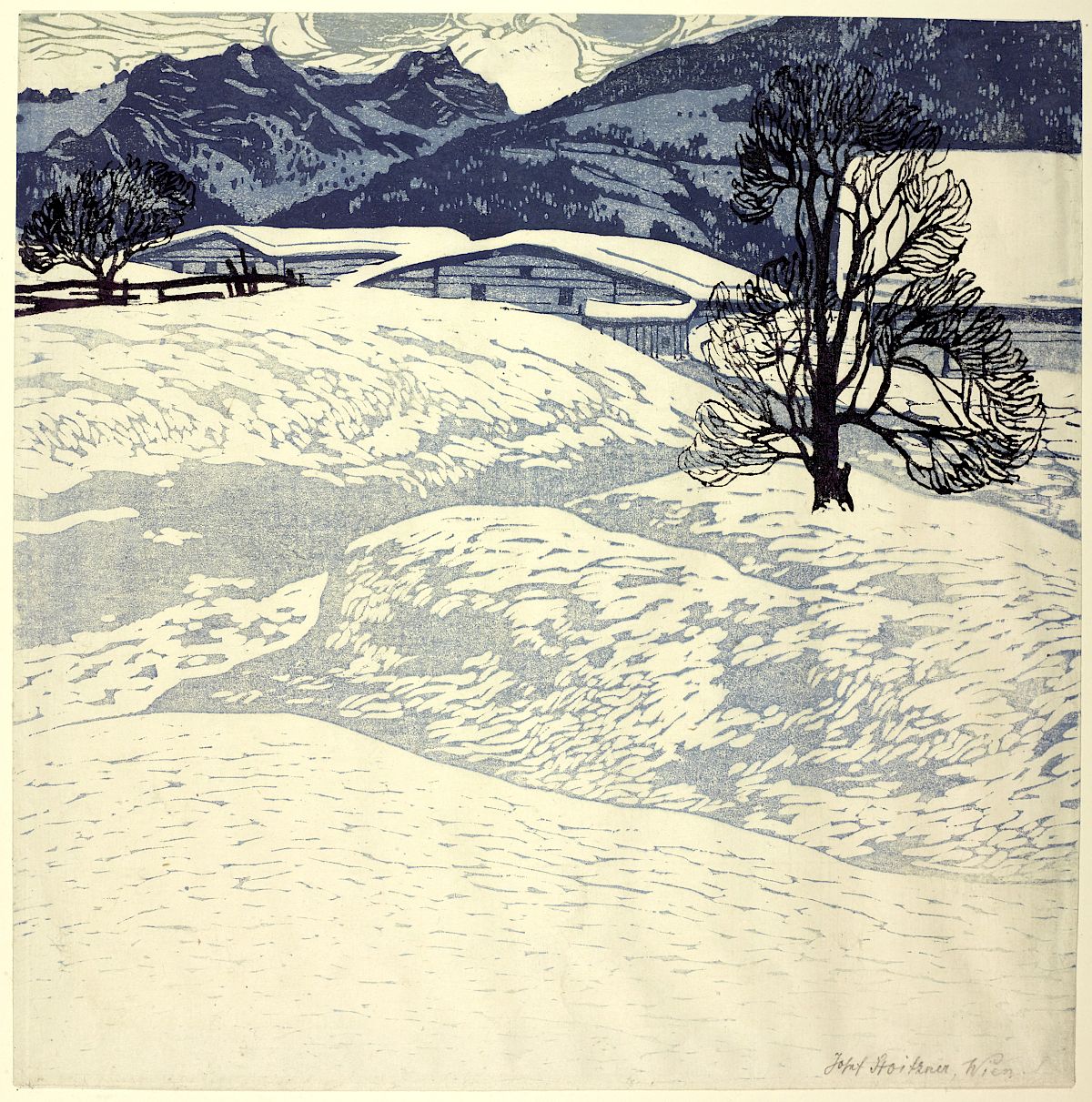The Color Woodcut in Vienna around 1900
Until 15 January 2017
Enjoy all works of the exhibition in our Online Collection
Around 1900, Vienna was a cultural melting pot as well as a bastion of the arts and sciences. In the area of fine arts, the Union of Austrian Artists – Secession pioneered new artistic territory and became the seed from which Viennese Art Nouveau would sprout.
This period saw prominent Secessionists including Carl Moll, Emil Orlik, and Koloman Moser rediscover one of the world’s oldest printing techniques entirely anew, thus ushering in an unforeseen golden era of the color woodcut. With their emphasis on outlines, on the stylization of motifs, and on the interplay of contrasting hues, these artists’ color woodcuts were thoroughly in keeping with the new formal ideals of the Art Nouveau style and went on to become popular items for collectors. Their decorative depictions of elegant ladies, exotic animals, and peaceful snowy landscapes, characterized by workmanship of the highest refinement and virtuosity, met with considerable acclaim and demand. With this exhibition on the color woodcut in Vienna between 1900 and 1914, the ALBERTINA Museum is devoting attention to a hitherto little-noted chapter of Viennese Art Nouveau with the presentation of around 100 outstanding works from its own collection.
An exhibition of the ALBERTINA Museum in cooperation with Frankfurt’s Schirn Kunsthalle.









